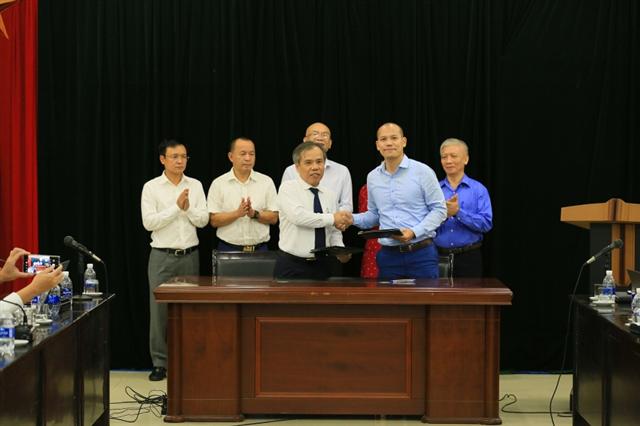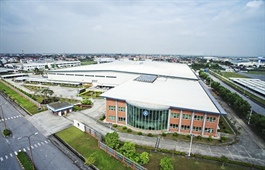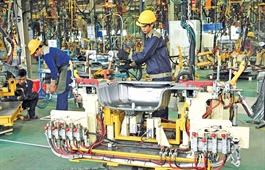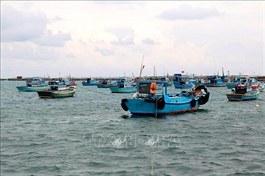Railway, aviation logistics link – solutions to increase farm produce competitiveness
Railway, aviation logistics link – solutions to increase farm produce competitiveness
Logistics firms in the railway and aviation sectors are taking action to increase service quality and boost links with farm produce traders to cut costs and increase competitiveness amidst increasing global integration.
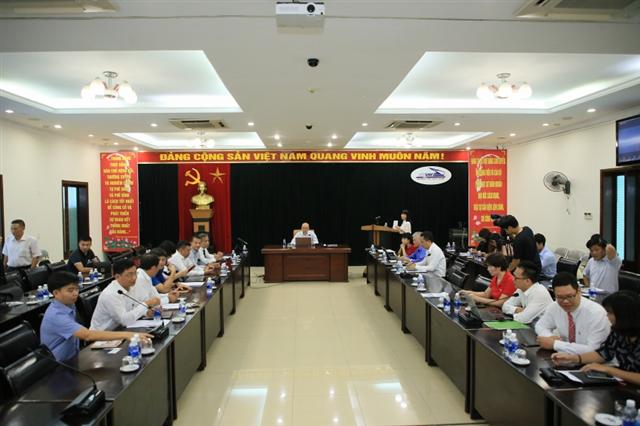
Railway and aviation logistics giants and farm produce trading firms discussed cooperation
|
Railway and aviation logistics giants and farm produce trading firms on September 8gathered at a roundtable to discuss improving the transportation links to better serve farm produce trade in the future.
Strengthened hand-shakes in need
Addressing the event, Tran Thanh Hai, deputy director of the Agency for Foreign Trade under the Ministry of Industry and Trade (MoIT) said that farm produce is one of the sectors that greatly contribute to the country’s total export turnover with many key export items such as rice, coffee, cashew nuts, pepper, and rubber, among others. In 2019, farm produce export turnover reached nearly $25.5 million, in which six out of the nine key staples reported an export turnover of over $2 billion each.
He, however, said that in addition to the achievements, Vietnam’s farm produce exports are still facing some challenges, with logistics costs being the backstop holding back farm produce from increasing its competitiveness. Therefore, cooperation between railway and aviation firms and farm produce traders should be enhanced.
According to a recent study on the means of transport for farm produce trading, roadways remain the top selection thanks to its flexibility and fast delivery, especially for exports to the countries which have borders with Vietnam. The runner-up is sea transportation because of its low cost and adaptability for exports to distant markets and to those with low seasonality.
Meanwhile, railway and aviation are still on the bottom of the list due to their high costs. Railways also lack a link with other means of transport.
Many participants agreed that the concentration on farm produce transport for exports by road has a measure of impact on the competitiveness of the products due to high logistics costs and traffic jams at border gates during peak periods.
Meanwhile, railway and aviation have their advantages but have yet to be chosen by exporters and importers. In the first half of 2020, over 800,000 tonnes of fruits were exported via the Lao Cai and Dong Dang border gates. Of this, only 17,400 tonnes of farm produce were imported or exported by train.
The facts prove that railway is a good choice for traders because of the capacity to transport huge volumes, possibly reaching 60,000 tonnes a day. Each carriage can handle 30 tonnes on average, while each train has about 18-21 carriages. Moreover, railway carriages offer better preservation capacity, more safety, and fast delivery. For example, international trains from Vietnam to Europe take 20 days, while normal trains take 40 days. The railway sector also provides formal import-export services such as customs clearance procedures at border gates, warehouses, and depots.
Talking about the difficulties in cargo transport by air, Do Xuan Quang from Vietjet Air Cargo JSC said that domestic airlines have smaller scale than international players, despite recent developments and expansions.
Moreover, domestic air carriers have yet to focus on freighters. They also lack qualified manpower for air cargo transport.
Quang admitted that air fares are too high for cargo transport, while preservation capabilities for farm produce remain an unsolved problem. Due to this, farm produce transport makes up a minority share of the aviation sector.
According to Nguyen Dinh Tung, general director of Vina T&T, which specialises in farm produce exports, said that his businesses have been using air cargo transport service for years. He, however, admitted that logistics cost remain high. On the other hand, freight rates are decided by international airlines when exporting to the US and Canada.
Actions for future improvement
Since the beginning of 2020, amidst the serious development of COVID-19 in Vietnam and globally, railways and aviation are amongst the hardest-hit sectors, reporting strong decreases in passenger volume. To partly cover the losses, the railway and aviation sectors are moving to upgrade infrastructure, increase service quality, and are opening new cargo transport services.
In particular, airlines increase the use of passenger aircraft for cargo transport to increase cargo transport capacity, thus reducing logistics costs.
Vu Tien Dung from Bamboo Airways said that Bamboo Airways planned to expand international flights in 2020. However, due to the pandemic, the airline focused on cargo transport. Vietjet Air Cargo also did the same.
As expected, in the third quarter of 2020, Vietjet will put into use a cargo fleet.
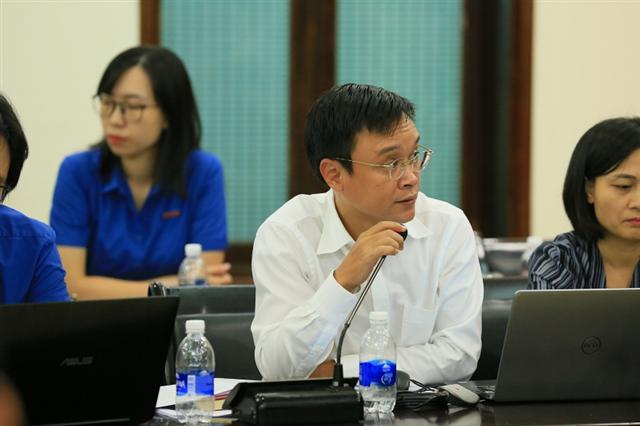
Nguyen Chinh Nam, director of the Planning and Business Department at VNR
|
In the railway sector, Nguyen Chinh Nam, director of the Planning and Business Department at state-owned railway giant Vietnam Railways (VNR), said that it upgrades the quality of carriages, operates self-propelled cold containers, provides door-to-door services, and others.
Recently, international cargo trains to countries via China are being put into operation, thus shortening transportation time, and speeding up formal customs clearance procedures at the border gate stations of Dong Dang, Vietnam and Pingxiang, China.
Railway Transport and Trade JSC (Ratraco), a unit of VNR, is offering a discount of 15 per cent on freight rates for containers of farm produce on North-South trains from September 9 to December 31, 2020.
To promote the exports and imports of farm produce by train, the railway sector is working with countries on possible solutions to increase connectivity, information exchange, freight rates, service fees, and others to provide more reasonable rates for customers.
|
At the roundtable, railway and aviation logistics firms signed cooperation agreements with farm produce traders in a move to boost linkages.


